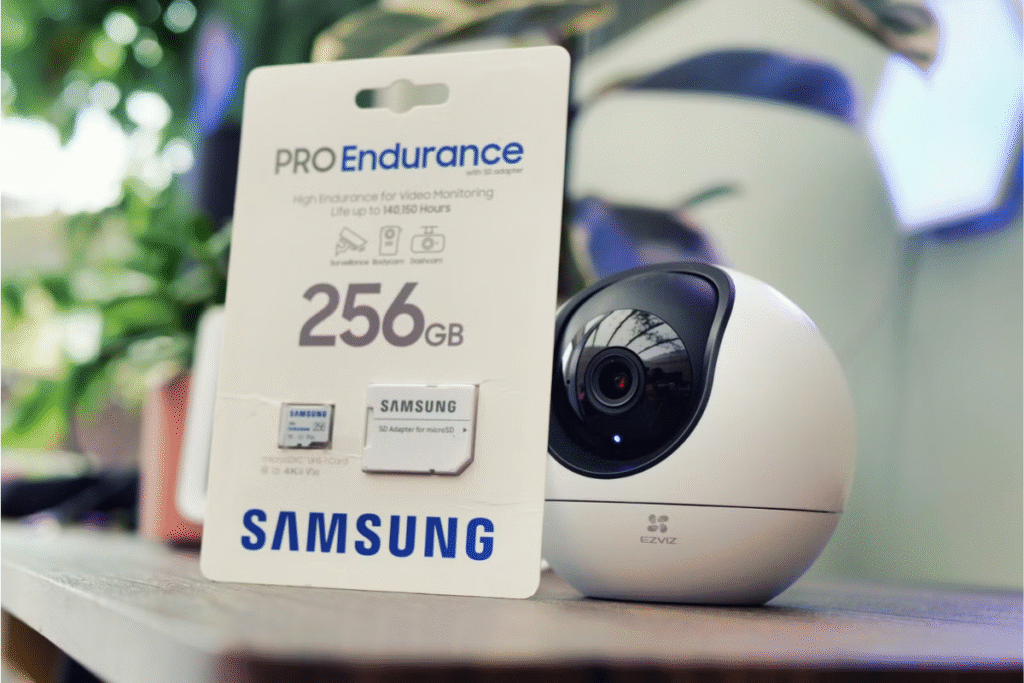In today’s digital world, memory cards have become an essential part of our daily tech usage. From smartphones to cameras, drones, and gaming consoles, almost every device relies on a memory card to store valuable data such as photos, videos, music, and documents. However, not all SD cards are created equal. Choosing the wrong one can lead to slower performance, compatibility issues, or even data loss. Understanding the key aspects of memory cards—speed, size, and capacity—can help you make an informed decision and ensure your device performs at its best.
Understanding Memory Cards
Memory cards, often referred to as SD cards (Secure Digital cards), are compact storage devices used to save data. They are portable, affordable, and capable of holding large amounts of data in a very small physical form. These cards are widely used in devices like digital cameras, action cameras, smartphones, tablets, drones, laptops, and more.
However, before purchasing a memory card, it is crucial to know that not all SD cards will work with every device. Factors like the card type, size, speed, and capacity must be carefully considered to avoid compatibility issues or underperformance. Let’s break down these factors in detail.
The Speed of SD Cards
One of the most important factors to consider when buying an SD card is its speed. Many users overlook this, but the speed can dramatically affect how your device performs. The speed of an SD card refers to how fast it can read and write data. This is especially important for tasks that involve high-resolution photos, videos, or gaming.
Why Speed Matters
If you are a professional photographer capturing high-quality RAW images, or a videographer recording 4K videos, a slow SD card can bottleneck your workflow. Imagine taking burst shots in a DSLR, but your camera slows down because the card cannot handle the rapid data transfer. Similarly, a slow card in a 4K action camera may result in video lag or dropped frames.
Understanding Speed Ratings
SD cards come with different speed ratings that indicate their performance. Some common ones include:
- Class 2, 4, 6, 10: These classes indicate the minimum write speed in MB/s. For example, Class 10 guarantees at least 10MB/s.
- UHS-I, UHS-II, UHS-III (Ultra High Speed): UHS cards offer much faster read/write speeds than standard Class cards. UHS-I can reach up to 104MB/s, while UHS-II can go beyond 300MB/s.
- Video Speed Class (V6, V10, V30, V60, V90): Specifically designed for high-resolution video recording, with V30 being suitable for 4K videos and V90 for 8K videos.
Before purchasing, check your device’s manual to see which speed rating is supported. Using a faster card than your device can handle won’t damage it, but it may not provide any performance boost either.
The Size of SD Cards
Memory cards are not one-size-fits-all. They come in three main physical sizes:
- Standard SD: The largest size, commonly used in older cameras, camcorders, and some laptops.
- MiniSD: Medium-sized cards, less common today, but some older devices may still use them.
- MicroSD: The smallest and most popular today, widely used in smartphones, drones, action cameras, and tablets.
Why Size Matters
Every device has a specific card slot designed to accommodate a particular size. Using the wrong size card can damage the device or make it impossible to insert the card. Some modern devices, like high-end cameras or smartphones, may support adapters that allow microSD cards to fit standard SD slots, but relying on adapters is not always ideal.
Choosing the Right Size
- Check your device manual or specifications to see which SD card size it supports.
- If your device supports multiple sizes, opt for the one most convenient for your usage and storage needs.
- Avoid buying multiple cards of different sizes unless you need them for different devices.
By selecting the correct size, you ensure the card fits perfectly and avoids unnecessary expenses on replacements.
The Capacity of SD Cards
Storage capacity is another crucial factor. SD cards come in various capacities, ranging from a few gigabytes to hundreds of gigabytes. The right choice depends on your storage needs and the type of data you plan to store.
Common SD Card Capacities
- Standard SD: Usually available in 1GB to 2GB capacity. Mostly outdated now.
- SDHC (Secure Digital High Capacity): Ranges from 4GB to 32GB. Ideal for casual photographers and smartphone users.
- SDXC (Secure Digital Extended Capacity): Ranges from 64GB to 2TB. Suitable for professional videographers and users with large storage requirements.
How to Choose the Right Capacity
- Casual Use: If you just want to store photos, music, or documents, a 16GB or 32GB card may suffice.
- Photography & Videography: If you are shooting in RAW or recording 4K videos, consider 64GB or higher. Large files fill smaller cards quickly.
- Gaming & Apps: Some devices, like the Nintendo Switch, benefit from SDXC cards with large capacity to store games and updates.
Choosing the right capacity ensures you won’t run out of space and also avoids overspending on unnecessarily large cards.
Compatibility Considerations
Even after selecting the right size, speed, and capacity, compatibility is key. Not all devices support all SD card types. For example:
- Older devices may only support SD or SDHC cards, not SDXC.
- Some devices have a limit on maximum supported capacity, e.g., up to 128GB.
- Speed classes may be capped by device hardware; a device that only supports Class 10 won’t benefit from a UHS-II card.
Always check the device specifications before purchasing. Manufacturers usually provide a list of compatible cards in the manual or on their website.
Brand and Quality
While the technical specifications are crucial, the brand and build quality of an SD card are equally important. Poor quality cards may fail quickly, corrupt your data, or have slower performance than advertised.
Tips for Choosing Reliable Brands
Stick to well-known brands like SanDisk, Samsung, Kingston, Lexar, or PNY.
Read reviews and ratings to see real-world performance.
Avoid extremely cheap cards from unknown brands—they may be counterfeit or unreliable.
Look for cards with warranties; high-quality SD cards often come with multi-year or lifetime warranties.
Investing a bit more in a reliable brand ensures your data stays safe and your device functions optimally.
Special Considerations
Depending on your use case, there are a few additional considerations when choosing an SD card:
Temperature & Weather Resistance: If you use your camera outdoors, look for cards that can withstand extreme temperatures, humidity, and water exposure.
A2 and App Performance: For smartphones, A2-rated cards allow faster app performance and smoother operation.
Durability: Some SD cards are shockproof, X-ray proof, and magnet-proof, ideal for professional photographers or travelers.
Considering these factors ensures your card performs reliably in various environments and scenarios.
How to Maintain Your SD Card
Once you’ve chosen the right SD card, proper maintenance is crucial to extend its lifespan:
Format Before Use: Always format the card using your device before storing data. This ensures compatibility and avoids file system errors.
Avoid Overfilling: Don’t fill the card to maximum capacity. Leaving some free space improves performance and reduces data corruption risk.
Handle With Care: Avoid bending, dropping, or exposing the card to extreme heat or moisture.
Safely Eject: Always eject the card safely from devices to prevent data loss.
Proper care helps your SD card last longer and reduces the risk of losing valuable data.
Conclusion
Choosing the right SD card might seem simple at first, but it requires careful consideration of size, speed, capacity, and compatibility. Whether you are a casual user, a professional photographer, or a gamer, selecting the appropriate SD card ensures that your devices perform optimally, your data is safe, and you avoid unnecessary spending.
FAQs
What is the difference between SD, SDHC, and SDXC cards?
SD (Secure Digital): Standard cards with a capacity up to 2GB. Mostly outdated.
SDHC (Secure Digital High Capacity): Ranges from 4GB to 32GB, suitable for most modern devices.
SDXC (Secure Digital eXtended Capacity): Ranges from 64GB up to 2TB, ideal for 4K videos, high-resolution photos, and large files.
How do I know which SD card speed I need?
The speed depends on your usage:
Casual use (photos, music): Class 4 or Class 10 cards are sufficient.
High-resolution photography or 4K video recording: UHS-I or UHS-II cards with a Video Speed Class of V30 or higher are recommended.
Always check your device specifications for supported speed classes.
Can I use a microSD card in a standard SD card slot?
Yes, with an adapter. A microSD card can fit into standard or miniSD slots using a proper adapter. However, using an adapter may slightly reduce performance. Always ensure the adapter is high quality.
What size SD card do I need for my device?
Check your device manual to see which card sizes it supports (Standard, MiniSD, or MicroSD).
Using the wrong size card may not fit or could damage the device.
How do I prevent SD card corruption?
Format the card in your device before first use.
Avoid removing the card while data is being written.
Don’t overfill the card; leave some free space.
Use cards from reputable brands to ensure quality and reliability.
Are expensive SD cards worth it?
Yes, investing in a high-quality SD card ensures faster speeds, durability, and reliable data storage. Cheap or unknown-brand cards may fail, corrupt files, or underperform.
Can SD cards be used across different devices?
Yes, but compatibility depends on the card type, size, and speed. Some older devices may not support SDXC cards or higher-speed UHS cards. Always check device specifications before using a new card.
How do I choose the right storage capacity?
Casual use: 16GB–32GB is usually enough.
Photography and videography: 64GB or higher is recommended.
Gaming or app storage: Large-capacity SDXC cards ensure you have space for games and updates.
What special features should I look for in an SD card?
Durability: Shockproof, waterproof, and X-ray proof cards are available.
Temperature resistance: Ideal for outdoor photography or extreme conditions.
App performance (A1/A2-rated): Useful for smartphones and tablets to improve app loading speed.

